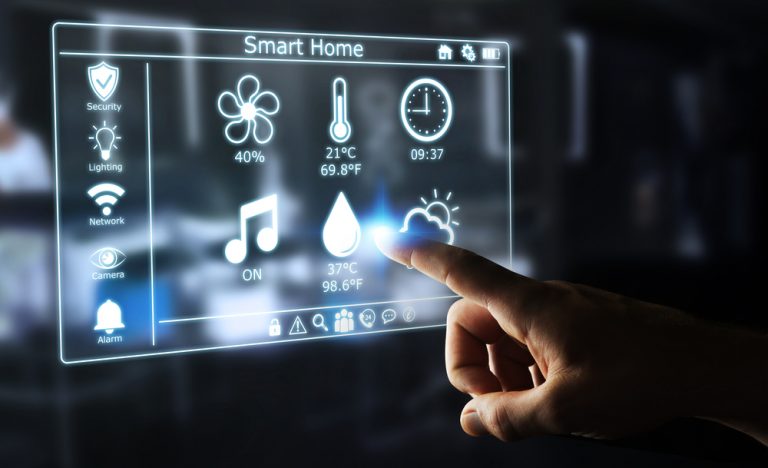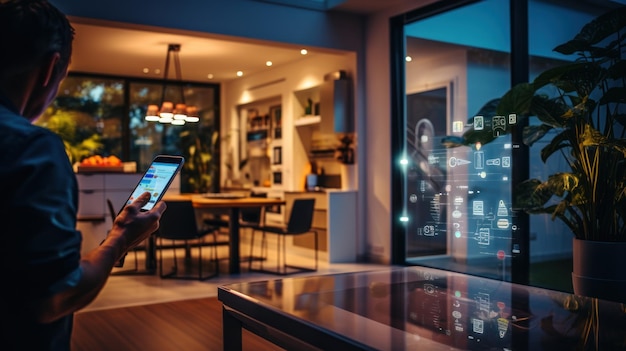Smart Home Integration Drives Innovation and Consumer Demand

The home is no longer just a place to live; it’s a dynamic, intelligent, and interconnected ecosystem. The concept of the smart home, once a futuristic fantasy, is now a present-day reality, driven by a powerful wave of technological innovation and a growing consumer demand for convenience, security, and sustainability. This isn’t just about a few gadgets; it’s a profound transformation that is fundamentally reshaping our relationship with our living spaces. This article will take a deep dive into the core concepts of smart home integration, exploring the pivotal role of the Internet of Things (IoT), the power of artificial intelligence (AI), the focus on a home as a hub for wellness, and the immense opportunities and challenges that lie ahead for a more automated, efficient, and human-centric future.
The Internet of Things

At the heart of every smart home is a nervous system of data. A network of connected devices, or the Internet of Things (IoT), is the foundational layer that allows a home to communicate with itself and with its occupants.
A. Seamless Connectivity
The new era of smart home integration is defined by a seamless, interconnected network of devices. What was once a collection of disparate gadgets is now a unified ecosystem where all devices can communicate and work together. This is powered by a number of key technologies:
- Wi-Fi and Bluetooth: These are the two most common wireless communication protocols in a smart home. Wi-Fi is used for devices that require a high-speed connection, such as a smart TV or a security camera, while Bluetooth is used for devices that require a low-power connection, such as a smart lock or a light bulb.
- Smart Hubs: A smart hub, such as an Amazon Echo or a Google Nest, is the central brain of a smart home. It is a single device that can communicate with and control all the other smart devices in the home. This eliminates the need for a separate app for each device and creates a more seamless and intuitive user experience.
- Thread and Zigbee: These are two new, low-power mesh network protocols that are designed for smart home devices. They allow devices to communicate with each other over a long distance and to create a more reliable and resilient network.
This seamless connectivity is the key to a truly intelligent home, where every device is a part of a larger, interconnected ecosystem.
B. The Power of Automation
The true power of a smart home is in its ability to automate a wide range of tasks, from adjusting the thermostat to turning off the lights. This is a fundamental shift that is making our homes more efficient, more secure, and more convenient.
- Automated Routines: A smart home can be programmed with a series of automated routines, or “scenes,” that can be triggered by a simple voice command or a tap on a smartphone. For example, a “good morning” routine could turn on the lights, turn on the coffee maker, and play a favorite playlist, all with a single command.
- Proactive Security: A smart home security system can use motion sensors and smart cameras to proactively monitor a home for a potential threat. If a motion sensor detects a person in the living room, the system can automatically turn on the lights, send a notification to the homeowner, and record a video.
- Efficient Energy Management: A smart thermostat can learn a homeowner’s habits and preferences and then automatically adjust the home’s temperature to a more energy-efficient setting. This can reduce a home’s energy bill and its carbon footprint.
The Intelligent Home
A truly smart home is more than just a collection of connected devices; it’s a living, breathing, and intelligent ecosystem that can adapt to the needs of its occupants. This requires a new generation of smart technology that is powered by artificial intelligence.
A. The Power of Artificial Intelligence (AI)
The new generation of smart home technology is powered by artificial intelligence. AI can automate a wide range of tasks, from adjusting the temperature to turning off the lights, and it can learn a homeowner’s habits and preferences to create a more personalized and comfortable living experience.
- Centralized Control: A smart home can be controlled from a single device or a smartphone app. This allows a homeowner to control everything from the lighting and temperature to the security system and the entertainment system from anywhere in the world.
- Predictive Maintenance: AI-powered systems can analyze a home’s data to predict when a system, such as an HVAC unit or a water pump, is likely to fail. This allows a homeowner to schedule maintenance proactively, preventing a costly and unscheduled breakdown.
- Personalized and Adaptive Environments: An AI-powered smart home can learn a homeowner’s habits and preferences and then adapt the home’s environment to them. The smart home can, for example, learn a homeowner’s favorite temperature and automatically adjust the thermostat to that temperature when they are home.
B. A Home as a Hub for Wellness
The new era of smart home integration is also a new era of wellness. A home is not just a place to live; it’s a hub for health, fitness, and a balanced lifestyle.
- Air and Water Quality Monitoring: A smart home can monitor the quality of the air and water, and it can alert a homeowner to any potential health risks. This is a crucial component of a home as a hub for wellness, as it ensures that the home’s environment is healthy and safe.
- Integrated Fitness and Health Technology: A smart home can be a hub for a person’s health and fitness. A smart home can, for example, be equipped with a smart mirror that can provide a personalized workout, or a smart bed that can monitor a person’s sleep and provide a detailed analysis of their rest.
- Biophilic Design: The use of biophilic design, which integrates nature into a home’s design, is a new and powerful trend in smart home integration. The use of natural light, natural materials, and indoor plants can have a significant positive impact on a person’s mental and physical health.
Challenges and Opportunities

While the future of smart home integration is bright, there are significant challenges that must be addressed to ensure that this revolution is inclusive and sustainable.
A. The Cost of Implementation
The cost of a smart home, particularly a net-zero home with all the latest smart technology, can be prohibitive. The components that power these homes are expensive, creating a new digital divide between those who can afford a high-end home and those who cannot. The use of modular and prefabricated components is a major step toward addressing this, but more work is needed to make a smart home accessible to everyone.
B. Data Privacy and Security
The vast amount of sensitive personal and medical data collected by a smart home raises serious concerns about privacy and security. Who owns this data? How is it stored and secured? A data breach could have devastating consequences, and new regulations will be needed to protect a homeowner’s privacy.
C. The Evolving Legal and Regulatory Framework
The new era of smart home integration is advancing faster than the laws that govern it. New regulations are urgently needed to address a wide range of issues, from the legal status of a smart home to the rights of a homeowner whose home is connected to a smart grid. The lack of a clear regulatory environment is a major barrier to adoption for many homeowners and developers.
Conclusion
Smart home integration is not a passing trend but a powerful and transformative movement that is fundamentally reshaping our relationship with our homes and with the environment. It is a testament to the growing awareness from both architects and builders that a healthier future is not just an ethical imperative but a business necessity. The use of advanced materials, a new focus on energy efficiency, and the integration of a new generation of smart technology are all a part of this new era. The new era of smart home integration is a clear signal that the future of home design is a new kind of living, a living that is as adaptable and as resilient as it is intelligent and sustainable.
However, as we embrace this new era, we must also confront the significant challenges that lie ahead. The high cost of a smart home, the need for a new legal and regulatory framework, and the challenges of data privacy and security are all hurdles that must be addressed proactively. The future of home design is a journey that will be defined not just by its technological prowess but by its ability to create a world that is more connected, more human-centric, and more conducive to a person’s overall well-being. The smart home is here, and it promises to build a future where our homes are as healthy and as happy as we are.

